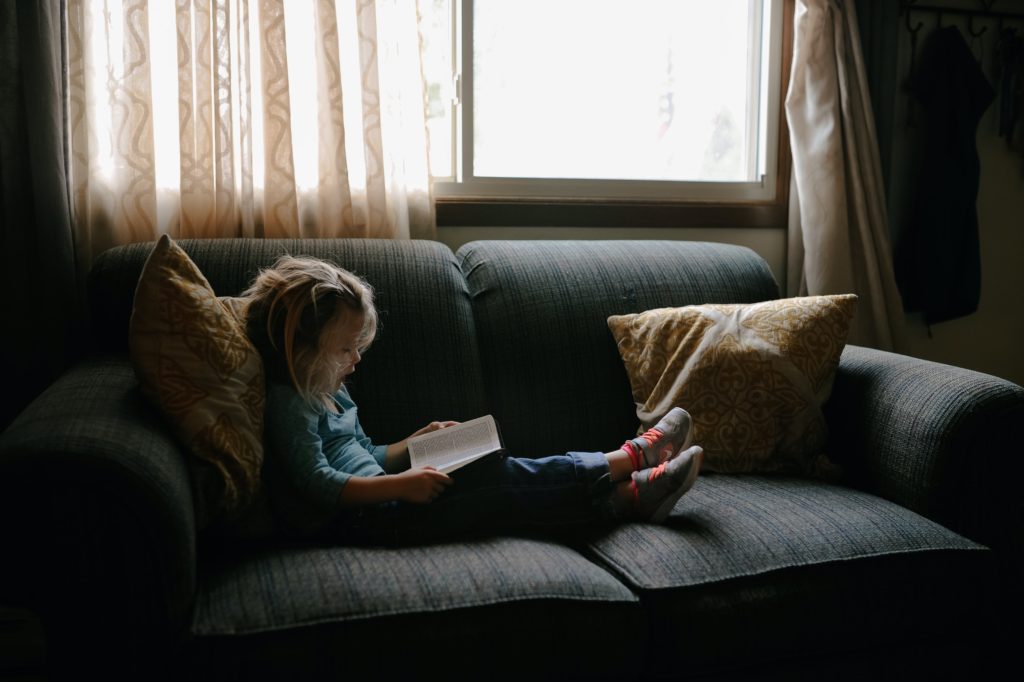Welcome to Tuesday morning …I’m trying to think of songs about Tuesdays, and I can’t think of anything; Monday and Friday, yes, (although ‘Friday I’m in Love’ doesn’t really mean the same thing at the moment) but not Tuesday. Maybe your children could compose a song for Tuesday; surely they can find some nice things to say about Tuesday?
Today on the blog I’ve gone back to books, and some fun ways to interact with them, whether it’s reading them, listening to them, reflecting on them or composing them – there’s something for everyone.
For the little people in your life, we have the ‘Bouncing Bed Bugs’ from Storytime. Please find here a copy of the story for you to print out or use on screen, and here you can find a reading of the story on YouTube. This delightful story looks at the huge impact that tiny things can have, utilising both poetry and prose in a way that is sure to keep younger children entertained. As a follow up activity, perhaps you could ask your child to write and illustrate an Australian version of the story – magnetic mozzies or farting flies anyone?
David Walliams really is a man who needs no introduction to middle school aged children – and their parents are probably pretty familiar with him too! Walliams’s website, as well as promoting his books, also has a range of resources that you can use. The one I particularly wanted to highlight was his ‘Elevenses’ series, where he reads a chapter or story from one of his books each morning at 11 am. The past week’s readings are all kept on the site for you to listen to at a time that suits you. Currently Walliams is reading from his ‘World’s Worst Children’ series, so if your child has these books they can follow along.
One of the best ways to engage children is to hand them a pen, some pencils, or even some paints and let them tell a story. But one of them most difficult things to do is to structure a story to make it interesting for others to read or listen to; so that the story has a point to it (and an ending, some people forget that it needs to end properly!). This is not an idea that’s all that easy to convey to children, particularly when you’re not in the same room as them. One of the best explanations I’ve seen comes from Matt Stanton’s YouTube channel. His explanation and diagram of story structure is simple, easy to follow, and makes sense – it’s not too complicated! Have children copy down the diagram he draws; it’s probably best just to watch it through once and then re-watch the video, pausing it to give them time to copy information down. Then, ask them to fill in the details of a story on their diagram using an idea they’ve already had, or one you give them. Then they can write, paint or draw their story (see my resource suggestion below)!

Finally for today, I wanted to let people know about Pixton, a (kind of) free online comic generator. There are a few online comic/graphic novel generators around, but I quite like this one as it’s easy to use. If you’re a teacher, you can set up a school or class account (although you do need to pay for this) so that students can complete tasks you set – maybe they could create comics about science lab safety or demonstrate how to complete algebraic equations? There are even lesson plans available. It’s also possible for children to set up their own accounts. Once you’ve set up an account you’ll be prompted to create an avatar, then starting your first comic is simple and a lot of fun. It you have students or children who don’t always love responding to things in writing, perhaps this could be an alternative way to convey learning? You can pay to have a greater range of options for things like settings and costumes, but you can do a lot with the free packages.
Have a great Tuesday, and I look forward to seeing you back here later in the week.
Regards,
Jemma
To stay in touch with the Teachers’ Hub, please subscribe to our newsletter (the form can be found at the bottom of the page), where we will keep you updated with new releases, along with letting you know about great resources, activities and important news. For more great content, please follow our social media channels on:
Facebook @HarperCollinsChildrensBooksAustralia
Instagram @harperkidsau
Twitter @harperkidsoz
where HarperCollins Children’s Books will be sharing reading recommendations, fun activities and insights into the world of making children’s books.





